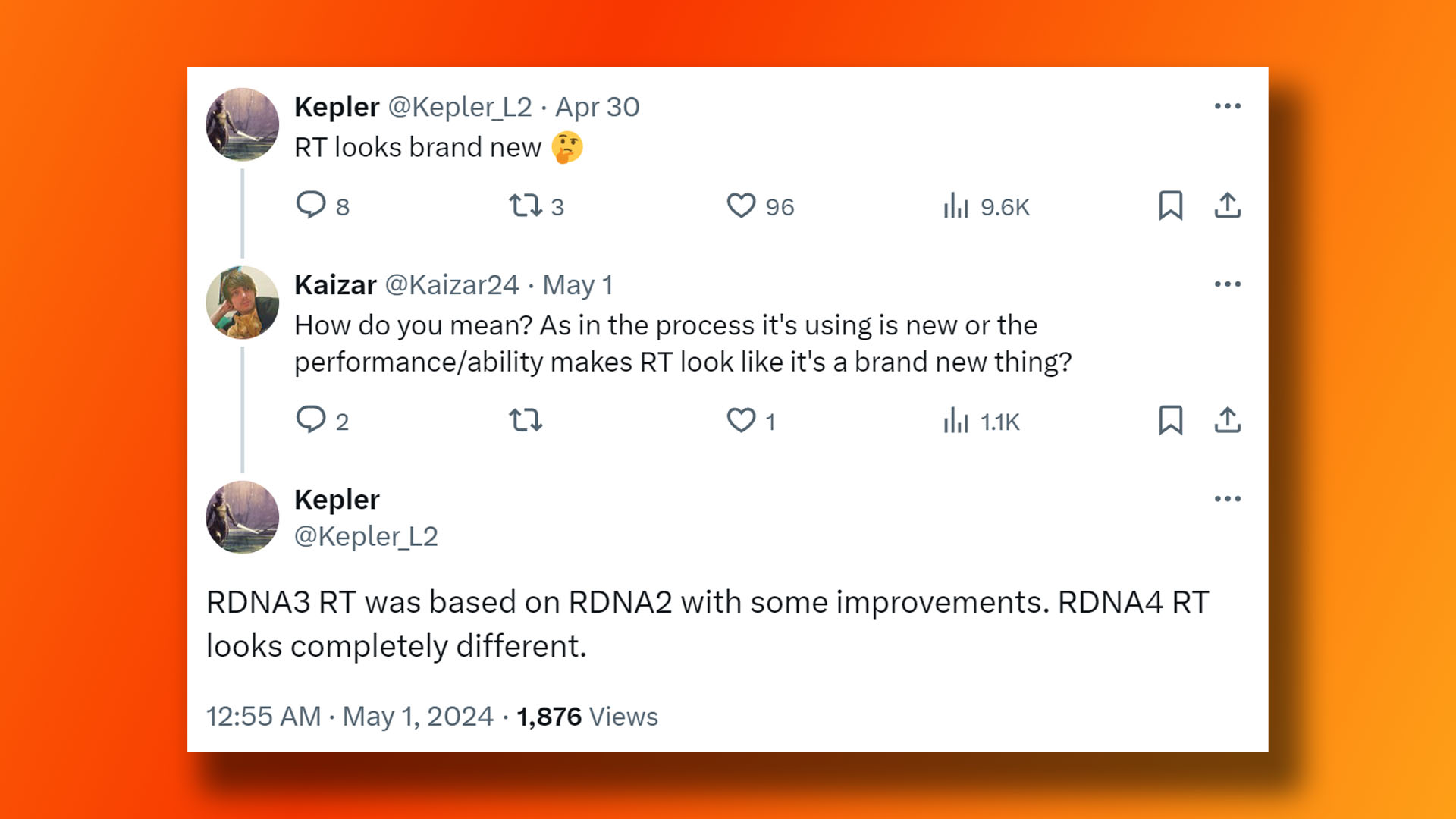AMD has historically lagged behind Nvidia when it comes to ray tracing in games, but according to the latest leak, AMD ray tracing is about to completely change with the launch of its RDNA 4 architecture, which is expected to launch later in 2024. These GPUs will still be up against some stiff competition, though, as Nvidia is expected to release its next-gen Blackwell GPUs in the same timeframe.
The latest AMD GPUs, can handle ray tracing to a certain degree, and some of them have landed on our best graphics card guide, thanks to some aggressive pricing. However, there’s no question that Nvidia still has the upper hand when it comes to rendering ray traced effects such as reflections and shadows. Could that all be about to change?
In a post on X (formerly Twitter), tech leaker Kepler_L2 claimed that the ray tracing engine on AMD’s new RDNA 4 GPUs “looks brand new.” In a follow-up post, Kepler_L2 then clarified that “RDNA3 RT was based on RDNA2 with some improvements. RDNA4 RT looks completely different.”
AMD has been playing a game of catch-up with Nvidia when it comes to ray tracing. Not only did Nvidia get its first GeForce RTX 20 series GPUs out the doors while AMD was still stuck on its aging Graphics Core Next architecture, but AMD’s first-gen RDNA GPUs, such as the Radeon RX 5700 XT, didn’t have any ray tracing support either.

In our own tests, we’ve found that the ray tracing performance of current AMD RDNA 3 GPUs is roughly comparable to that of Nvidia’s last-gen Ampere graphics cards. RDNA 3 definitely improved on RDNA 2 when it comes to ray tracing, for example by moving some of the hardware bounding volume hierarchy (BVH) sorting and traversal work from the GPU shaders to the RT cores, but Nvidia’s Ada GPUs are still much quicker at ray tracing.
Of course, ray tracing isn’t the only area where AMD needs to catch up with Nvidia. AMD is still leaving the matrix AI cores in its GPUs unused in games, and in our own tests, Nvidia DLSS Super Resolution tech looks significantly better than AMD’s FSR. What’s more, Nvidia’s DLSS Frame Generation tech is much more widely supported than FSR’s equivalent.
If AMD can nail ray tracing and AI, though, its GPUs are otherwise plenty fast enough when it comes to raw shader power, and it looks as though there are some very interesting times ahead in the PC gaming GPU market. In the meantime, if you’re looking to get a new graphics card, check out our GeForce RTX 4070 Super review, where we benchmark Nvidia’s latest mid-range GPU.
